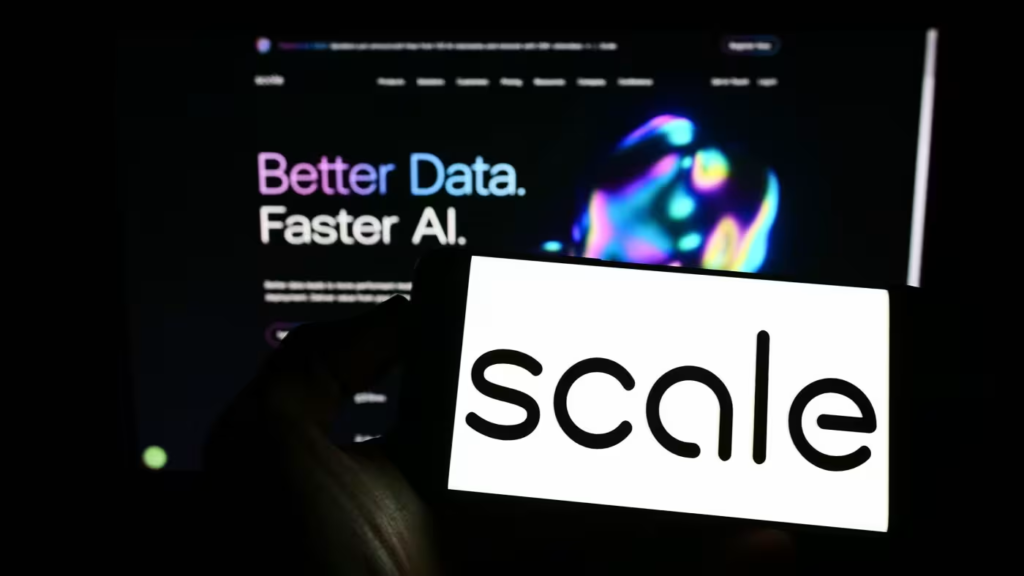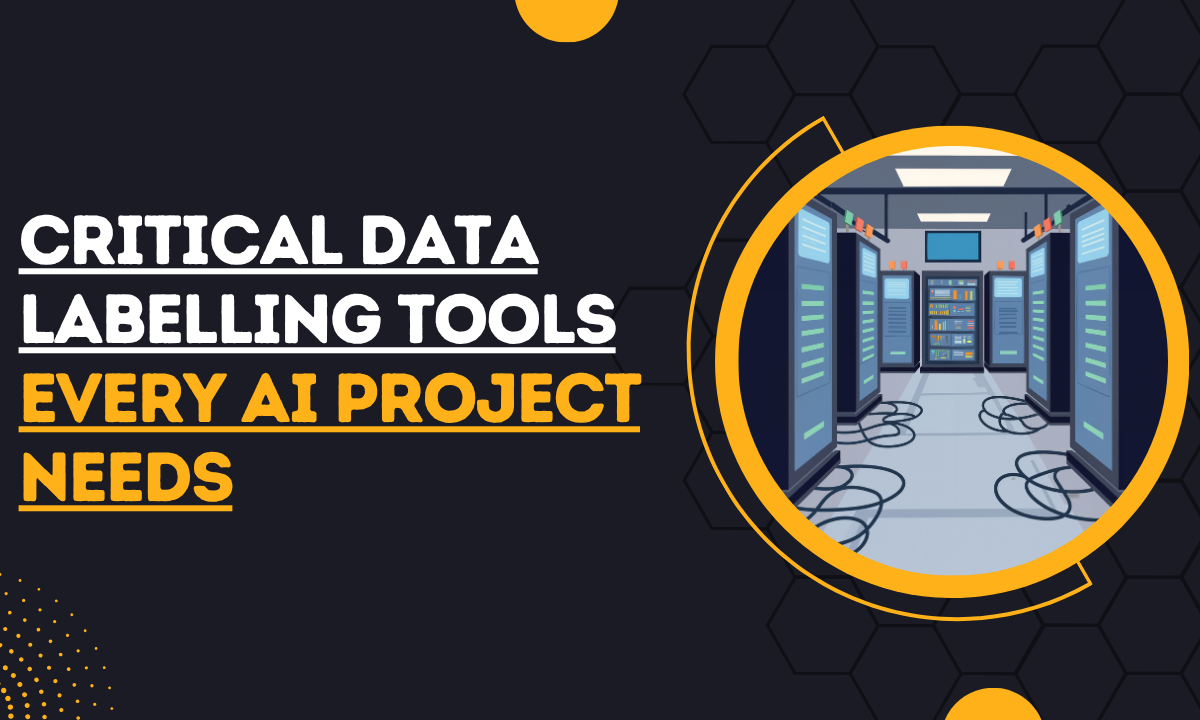Critical Data Labelling Tools Every AI Project Needs
Data labelling tools are the quiet engines behind every smart app and AI system you use daily.
From recommendation engines to autonomous navigation, these platforms turn raw data into structured insights.
But how do you choose the right one for your project?
Not all tools are created equal.
Some excel in speed, others in compliance, and a few are perfect for experimental workflows.
This guide breaks down the top eight platforms, showing where they shine, what makes them unique, and how they can fit into your AI pipeline — in a way anyone can understand.
What Are Data Labelling Tools?
Data labelling tools are software platforms that help turn raw information—images, text, video, or audio—into structured, annotated datasets that machines can understand.

Source: Kili
Think of them as translators between human perception and AI algorithms.
They allow you to tag objects in images, classify texts, or mark events in videos so that machine learning models can learn patterns effectively.
High-quality annotations are crucial because AI models are only as good as the data they learn from.
Whether you’re building a chatbot, autonomous vehicle, or recommendation system, data labelling tools form the foundation for accurate, reliable AI performance.
Data Labelling Tools and AI Development
Data labelling is central to AI development.
Without well-annotated datasets, machine learning models cannot recognize patterns, make predictions, or interact intelligently with the world.
During AI development, labelled data serves as the “training ground,” helping models distinguish things accurately.
For example, a photo app needs labelled images to automatically recognize faces or filter blurry shots.
Similarly, a grocery delivery app relies on labelled product images and text to suggest the right items when you search.
Efficient data labelling accelerates development cycles.
It also improves model accuracy and reduces errors in production.
In short, data labelling is the engine that drives practical, real-world AI applications.
Sophisticated data labeling tools must handle a diverse range of data types—text, image, audio, video, and sensor.
Each of these require specialized annotation techniques to train high-performing AI models across industries.
Video
Video annotation focuses on labeling motion-based data such as movies, surveillance recordings, or television footage.
Tasks often include object tracking, action recognition, and facial identification, helping AI systems understand dynamic scenes frame by frame.
Sophisticated labeling tools allow precise tagging of temporal sequences, making them indispensable for applications in security, sports analytics, and autonomous navigation.
Audio
When it comes to sound, annotation tools process audio files ranging from human speech and natural sounds to complex music compositions.
Common labeling activities include speaker diarization (identifying who’s speaking and when) and audio classification tasks like genre detection or emotion tagging.
This enables training of voice assistants, transcription software, and music recommendation systems with higher contextual accuracy.
Images
Labeling for image data involves annotating still visuals such as photographs, diagrams, or maps.
Tasks like image segmentation, object detection, and classification help AI models recognize visual elements and their relationships.
Advanced annotation interfaces support pixel-level precision, which is vital for areas like medical imaging, autonomous vehicles, and satellite mapping.
Text
In the text domain, annotation covers emails, social media posts, chat logs, and documents.
The labeling tasks typically include Named Entity Recognition (NER), sentiment analysis, and text classification.
These annotations allow natural language processing (NLP) models to extract meaning, tone, and context—powering intelligent systems such as chatbots, search engines, and customer feedback analyzers.
Sensor Data
Sensor-based labeling applies to data streams gathered from GPS devices, accelerometers, or environmental monitors.
Annotation in this field often involves activity recognition, location tracking, and environmental condition tagging.
Such labeled datasets support advancements in IoT systems, wearable tech analytics, and smart city infrastructure, where precision and context are crucial for real-time insights.
Use Cases: Data Labelling Tools
| Tool | Best Use Case | Standout Capability |
|---|---|---|
| Scale AI | High-volume, mission-critical AI projects requiring both human oversight and automation | Combines advanced platform features with a managed workforce to deliver scalable, high-quality annotations efficiently. |
| Labelbox | End-to-end data pipelines including RLHF workflows | Offers a full data factory approach, enabling annotation, evaluation, and continuous model feedback integration. |
| SuperAnnotate | Multi-modal enterprise projects (image, video, text, 3D) | Strong quality assurance tools and enterprise-grade security ensure data integrity and compliance for large teams. |
| Encord | Regulated industries or large-scale, multimodal datasets | Full-stack solution handling annotation, data management, model evaluation, and QA, with HIPAA-ready features. |
| V7 | AI-assisted automated labeling for video and images | Model-in-the-loop workflows and automated tracking accelerate annotation while keeping humans in review for accuracy. |
| Dataloop | Custom AI pipelines with MLOps integration | Flexible, data-agnostic platform supports unstructured datasets with drag-and-drop and SDK tools for advanced workflows. |
| Sama | Ethical AI initiatives needing verified labor | Combines impact sourcing with managed annotation teams, delivering high-quality data and social impact simultaneously. |
| iMerit | Complex, domain-specific annotation (medical, LiDAR, autonomous mobility) | Expert-in-the-loop workforce trained for high-complexity, mission-critical tasks ensures reliable results. |
Scale AI
Have you ever wondered how some AI projects handle millions of images or text documents with accuracy?
That’s where Scale AI comes in.

Source: Financial Times
Its hybrid approach pairs automation with a managed workforce.
This combination ensures you get speed without compromising quality.
You can feed data in batches, and the system intelligently routes difficult cases to human annotators.
Scale AI works best when volume and precision both matter — think autonomous vehicles or fine-tuning large language models.
If speed is your priority, Scale AI can handle it.
for small projects, the cost might feel steep. Worth it for mission-critical outcomes.
Labelbox
Looking to manage your data pipeline end-to-end?
helps you annotate, evaluate, and even incorporate human feedback for continuous learning.
Its tools for Reinforcement Learning from Human Feedback (RLHF) mean your model can learn smarter, faster. It’s versatile enough for images, text, and even audio datasets.
The interface is intuitive, so you don’t need a PhD to start labeling effectively.
Ever thought AI training could feel organized?
That’s Labelbox.
Perfect for teams who want a complete view of their data lifecycle.
Integration is smooth, and the platform scales as your project grows.
SuperAnnotate
Managing complex datasets across multiple formats can be daunting.
SuperAnnotate offers enterprise-grade solutions with robust quality controls.
From video to text, it ensures data integrity while maintaining high throughput.
Its security certifications mean your sensitive datasets stay compliant.
You don’t need to worry about messy pipelines — the platform standardizes workflows.
SuperAnnotate is ideal for businesses that cannot afford errors.
Its interface is straightforward, making large team collaboration easier.
If consistency and compliance are your top concerns, this tool delivers reliably.
Encord
Working in healthcare or regulated industries?
Encord has you covered.
It’s designed for multimodal, high-stakes datasets, including DICOM medical images.

Source: Hit Consultant
DICOM is the global standard that enables different medical imaging devices and software to store, exchange, and communicate images and related data seamlessly
The platform supports annotation, QA, and model evaluation, helping teams maintain efficiency while staying compliant with regulations like HIPAA.
HIPAA regulations protect patient health information by setting national standards for privacy, security, and electronic data exchange in healthcare.
Encord is particularly strong for projects where labeling precision directly impacts outcomes, such as diagnostic AI.
Its active learning features also help prioritize which data to label first, saving time and cost.
If you value accuracy and compliance, Encord is a smart choice.
V7
V7 shines for projects needing AI-assisted labeling.
Automated annotation accelerates video and image workflows, while model-in-the-loop ensures humans verify edge cases.
It’s perfect for teams with tight deadlines who still require precision.
V7’s Darwin platform also supports complex medical formats, making it versatile across industries.
You can customize review stages and implement multi-layered QA pipelines, giving you control without manual bottlenecks.
If you want fast, reliable annotations and don’t want to compromise on quality, V7 is ideal.
Dataloop
Dataloop is for teams building custom AI pipelines.
Its platform is data-agnostic, handling unstructured datasets with ease.
Drag-and-drop interfaces or Python SDKs allow you to automate annotation, preprocessing, and deployment workflows.
This flexibility makes Dataloop suitable for research teams or enterprises with unique requirements.
You can integrate it into existing MLops pipelines without disruption.
While the learning curve exists for advanced SDK features, its adaptability ensures that you can scale your labeling efforts according to project complexity.
Sama
Sama combines data quality with ethical sourcing.
Its managed annotation teams are vetted and trained to deliver precise results while contributing to social impact initiatives.
Why settle for just efficiency when you can also make a difference?
Sama excels for organizations that prioritize both accuracy and responsible AI.
The platform provides end-to-end management for labeling tasks, including QA and workflow oversight.
While pricing reflects its ethical sourcing, many teams find the benefits — reliability and impact — worth it. It’s a strong choice if values matter alongside performance.
iMerit
Need domain expertise for complex annotations?
iMerit specializes in high-complexity projects, including medical imaging and autonomous vehicle sensors.

Source: iMerit
Their expert-in-the-loop workforce ensures critical datasets are annotated reliably.
Not every project can afford errors, and iMerit minimizes that risk.
The platform handles sensitive and technical tasks that generalist crowdsourcing cannot.
While it may take longer and cost more than standard labeling tools, the quality assurance and specialized knowledge justify the investment for high-stakes projects.
FAQs
What do data labeling tools do?
Data labeling tools are software platforms used to annotate datasets, making them ready for training AI and machine learning models. They help convert raw data into structured, usable formats.
Why is data labeling important?
Properly labeled data ensures AI models learn accurately and perform reliably. Without labeled data, models cannot recognize patterns or make predictions.
What types of data can be labeled?
Data labeling tools support images, videos, text, and audio. Each type requires specific annotation techniques like bounding boxes, segmentation, or tagging.
Are data labeling tools suitable for beginners?
Yes, many tools are designed with intuitive interfaces for users with no prior experience. They often include tutorials and prebuilt templates to simplify labeling tasks.
Can data labeling be automated?
Some tools offer AI-assisted labeling to speed up the process. However, human verification is usually required to ensure high-quality, accurate labels.
How do I choose the right data labeling tool?
Consider factors like supported data types, collaboration features, pricing, and integration with your AI workflow. Trial versions can help evaluate usability and performance.
Is data labeling secure?
Reputable tools follow data privacy standards and encryption protocols. Ensure the tool complies with regulations if handling sensitive or personal information.
Related Posts
21 AI Tools for Doctors You’ll Regret Ignoring in 2025
21 AI Tools for Researchers Changing Academia Forever
Why AI Tools for Studying Are the Student’s New Superpower
Best AI Tools for Students: Your Ultimate Guide to Smarter Studying
Conclusion
Data labelling tools form the unseen engine of AI innovation.
They allow projects to scale, models to learn accurately, and outcomes to stay reliable.
Choosing the right platform — based on your data type, volume, and project stakes — is crucial.
hybrid systems like Scale AI to ethical models like Sama, these tools provide speed, precision, and compliance.
The right choice accelerates your AI development while ensuring high-quality results.
By understanding their strengths, you can navigate the data labelling landscape with confidence and clarity.

